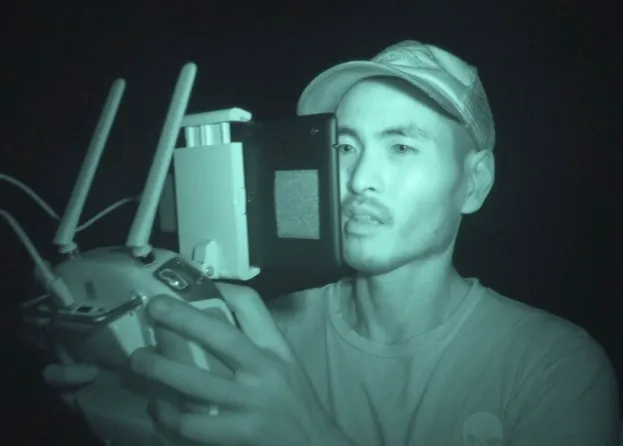Poachers in Baja California in Mexico were filmed by a drone carrying a thermal night-vision camera remotely operated by a crew from the Sea Shepherd Conservation Society.
The poachers realise they have been spotted, so quickly discard the illegal gillnet and speed away from the site.
They’re after one particular species – the totoaba, a Critically Endangered fish endemic to the Gulf of Mexico whose numbers have been severely depleted by overfishing and degradation of its spawning habitat in the Colorado River delta.
“We were able to capture never-seen-before footage of totoaba poachers operating under the cover of darkness,” said the drone pilot Roy Sasano.
“Now the poachers know they cannot act with impunity.”

These days, totoabas aren’t wanted for their meat. Instead, it’s solely for their swim bladders, which can sell for up to $10,000 in China, where they are believed to have medicinal properties.
The bladders, which help fish regulate their buoyancy, are sometimes referred to as 'aquatic cocaine' because they are so valuable.
But it’s not just the fish that are caught in the poachers’ nets.
The crew from Sea Shepherd located the discarded gillnet a couple of hours after the poachers were discovered and freed four, still living cow-nosed rays.

Two young hammerhead sharks and some corvina fish had already died.
One Critically Endangered species is particularly vulnerable to being accidentally caught in nets intended to catch totoabas – the vaquita porpoise, both the world’s smallest cetacean and its most endangered marine mammal.
In 2007, the vaquita’s population was said to be 150 and decreasing. And Sea Shepherd says it is now suspected to be “only a few dozen individuals”.
Sea Shepherd has been authorised by the Mexican Government to remove illegal gillnets from the Gulf of Mexico since January this year, and in that time has picked up 40.
Find out more about the totoaba trade in this report from the Environmental Investigation Agency (EIA)
Main image: Illegal fishing in the Gulf of California could be driving the vaquita porpoise towards extinction. © Roy Sasano

